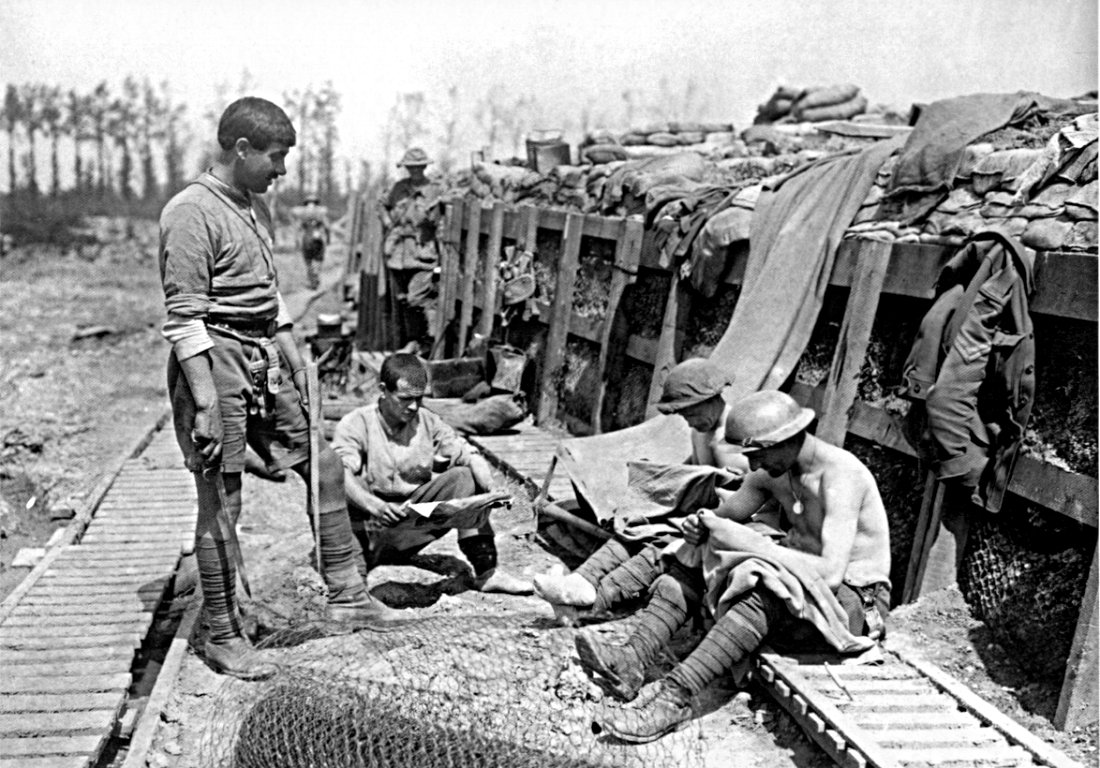Trench Warfare
Part 1 of 2: Read the accounts describing life and death in the trenches and then examine the pictures that follow. DISCLAIMER: Some Images are unpleasant.
Over 40 million casualties resulted from World War I, many occurring in the trenches. For a soldier daily life in the trenches can be quite boring. During battle, soldiers risk losing their life, which can be stressful and terrifying. Yet, life can also be incredibly boring and even depressing during the periods when soldiers sit waiting for battles to ensue. Regardless, at all times, soldiers have to worry about rats, catching diseases, shellfire, and body lice. Food is sometimes in short supply also. When soldiers are injured, it can take a while until they are treated. And, if they have an open wound, lying in the unsanitary, dirty and infested trenches can result in a serious infection. Some injuries are so bad that soldier’s limbs have to be amputated. Also, if a soldier disobeys his commander’s orders, he runs the risk of being executed.
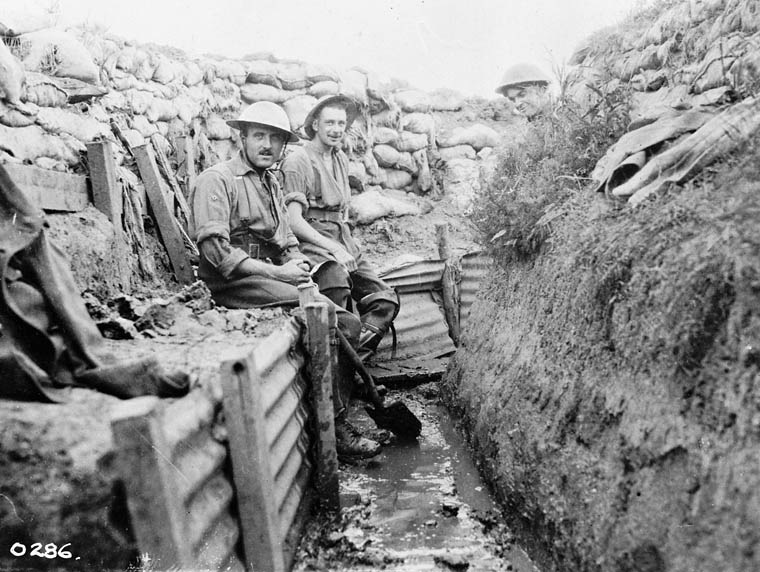 Allied Soldiers Passing Time in a Trench
Allied Soldiers Passing Time in a Trench
Between opposing trenches is an area called no man’s land. This area is covered by barbed wire, artillery craters and is under the wary eyes of snipers and machine gunners. Many times new soldiers would peer over the parapets of their trench into no man’s land only to be killed by a sniper’s bullet. Due to the intensity of World War I trench warfare, 10% of the fighting soldiers were normally killed during battle. That does not include those killed from post battle injuries like infection and disease. A minor injury in the trenches could kill since it was likely that infection or gangrene could set in. Gangrene is when your body tissue begins to decay due to the introduction of bacteria. The Germans recorded that 12% of leg wounds and 23% of arm wounds resulted in death, mainly through infection. The Americans recorded that 44% of casualties who developed gangrene died.
 The Result of One Day’s Catch
The Result of One Day’s Catch
As in many other wars, World War Iʹs greatest killer was disease. Sanitary conditions in the trenches were quite poor, and common infections included dysentery and cholera (both involve severe diarrhea and stomach ache) and typhus (disease caused by the bacteria lice carry). Many soldiers suffered from parasites (worms that live inside and feed of your body, making you severely ill) and related infections. Rats and trench lice often spread disease among the soldiers. Rats were commonplace as they lived off the dead bodies found in no man’s land and the lice they carried infected soldiers. Poor hygiene also led to fungal conditions, such as trench mouth and trench foot. Another common killer was exposure, since the temperature within a trench in the winter could easily fall below zero degrees Celsius (32 °F). Burial of the dead was usually a luxury that neither side could easily afford. The bodies would lie in no manʹs land until the front line moved, by which time the bodies were often rotten and half eaten by rats.
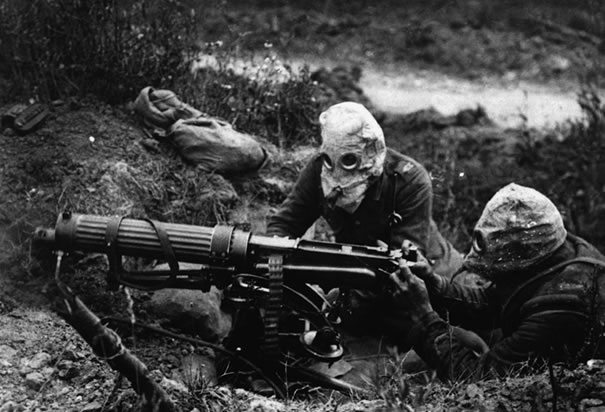 British Machine Gunners with Gas Masks during the Battle of the Somme
British Machine Gunners with Gas Masks during the Battle of the Somme
Excerpts of WWI Letters from Soldiers
The soldiers at the front need more rest. While in the trenches the water is over our knees most of the time. The war is going to last some time yet, and might be another twelve months before it is over. The war has only just begun and its going to be a war of exhaustion. After the regular armies have done their work it means that all the young lads at home being trained and disciplined and will take our place in the field. The sooner people understand this, the better, it will be for the nation. ~ Private H. F. Leppard in a letter to his mother on December 19th, 1914
We have just come out of the trenches after being in for six days and up to our waists in water. While we were in the trenches one of the Germans came over to our trench for a cigarette and then back again, and he was not fired at. We and the Germans started walking about in the open between the two trenches, repairing them, and there was no firing at all. I think they are all getting fed up with it. ~ Private Stanley Terry in a letter to his family in November, 1915
We started away just after dawn from our camp and I think it was about an hour later that we encountered the enemy. They were on the opposite side of the valley and as we came over the brow of the hill they opened on us with rifle fire and shrapnel from about 900 yards. We lost three officers and about 100 men killed and wounded in that half hour. I do not want any more days like that one. (this section censored) Anyway we drove the Germans back and held them there for eight days. I cannot tell you all I should like to, as it would never reach you. ~ Private James Mitchell in a letter to his father on October 17th, 1914.
I have an old platoon roll before me; three pages of names, numbers, trades, next-of-kin, religions, rifle numbers, and so forth. Faces come back out of the past to answer to these barren details, the face of this man dead, of that vanished for ever. Here and there rise memories of their habits, their nicknames, the look of one as he spoke to you, the attitude of another shivering in the night air, as he leaned over the parapet, watching with tired bloodshot eyes. Some of the faces have disappeared. did I know you? I censored your letters, casually, hurriedly avoiding your personal messages, your poignant hopes. ~ Guy Chapman account of his experiences in 1930s
Towards morning, while it is still dark, there is some excitement. Through the entrance rushes in a swarm of fleeing rats that try to storm the walls. Torches light up the confusion. Everyone yells and curses and slaughters. The madness and despair of many hours unloads itself in this outburst. Faces are distorted, arms strike out, the beasts scream; we stop just in time to avoid attacking one another.” ~ Erich Remarque, All Quiet on the Western Front
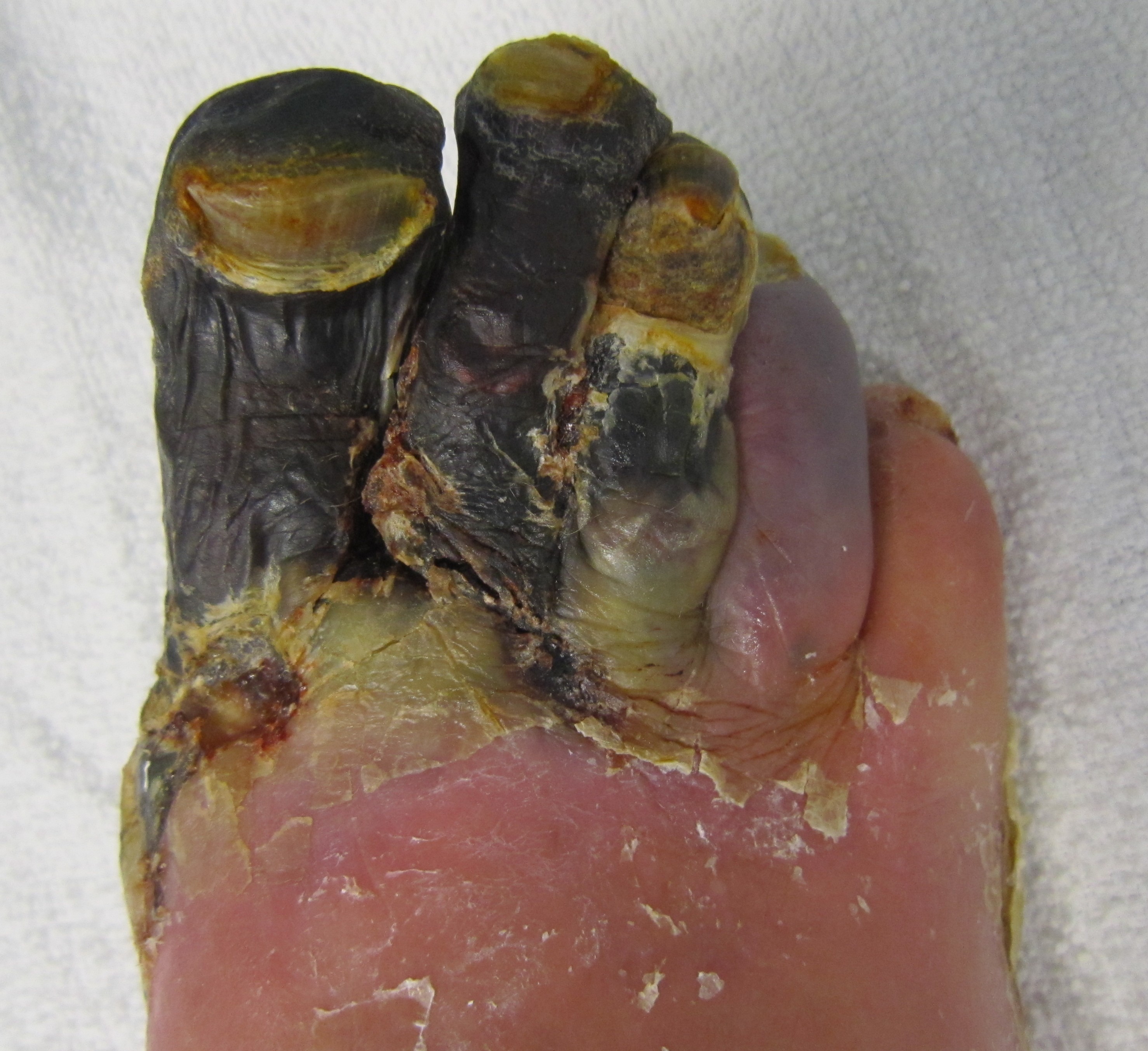 Modern image of Gangrenous Toes
Modern image of Gangrenous Toes
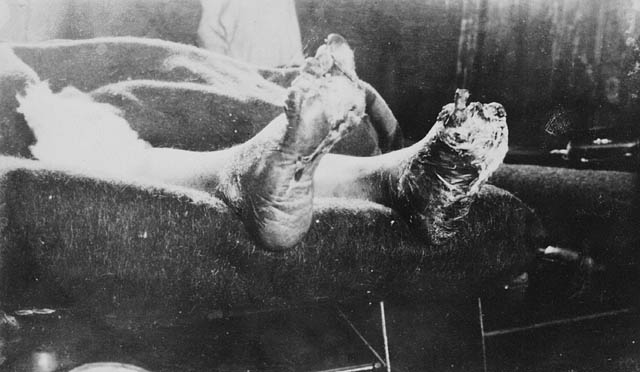 World War I Era image of Trench Foot Victim
World War I Era image of Trench Foot Victim
Part 2 of 2: Assume you are a wily veteran of the trenches in the Great War (WWI) and are offering advice to new troops. Create a list of 15 rules or steps new recruits should take in order to survive.
